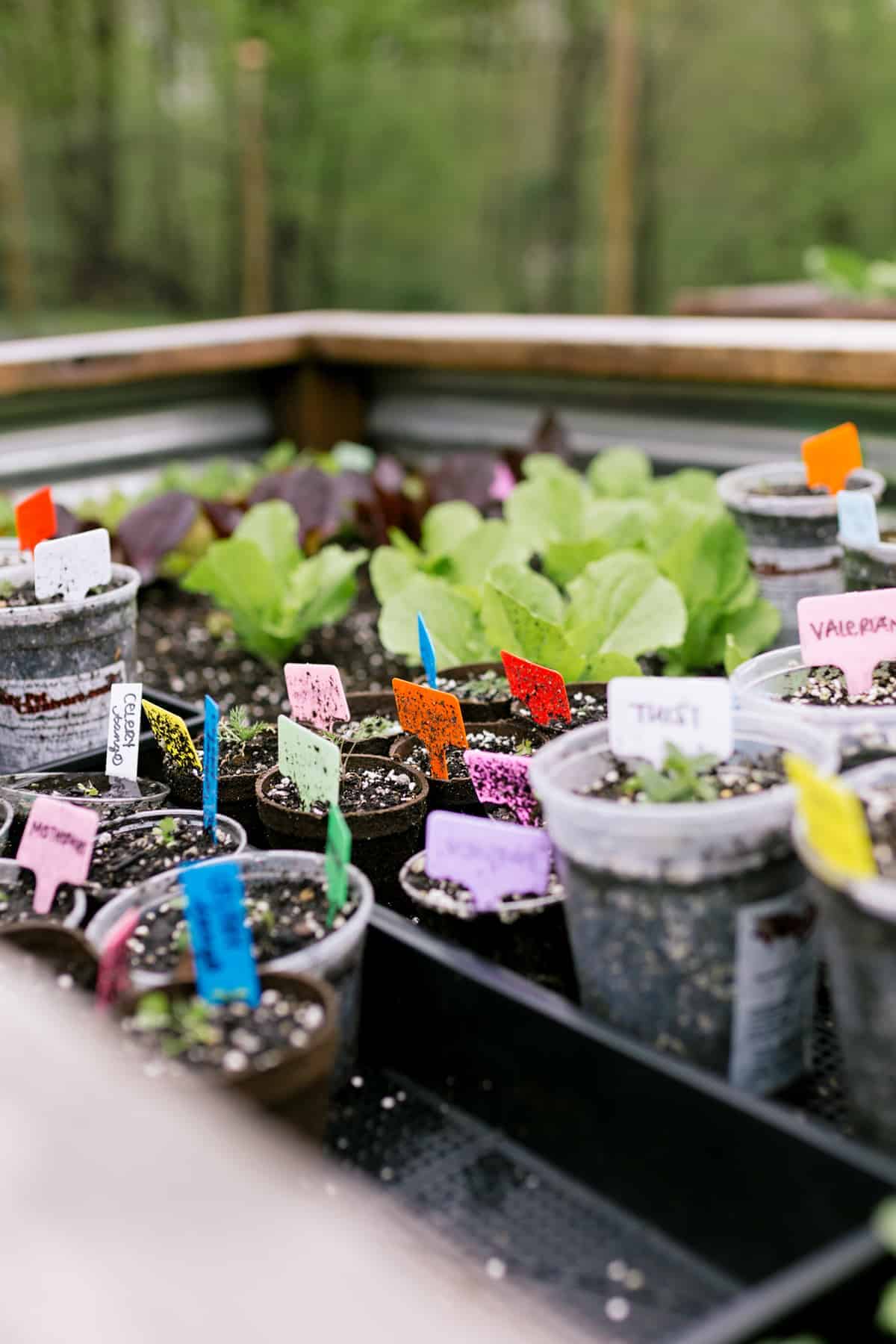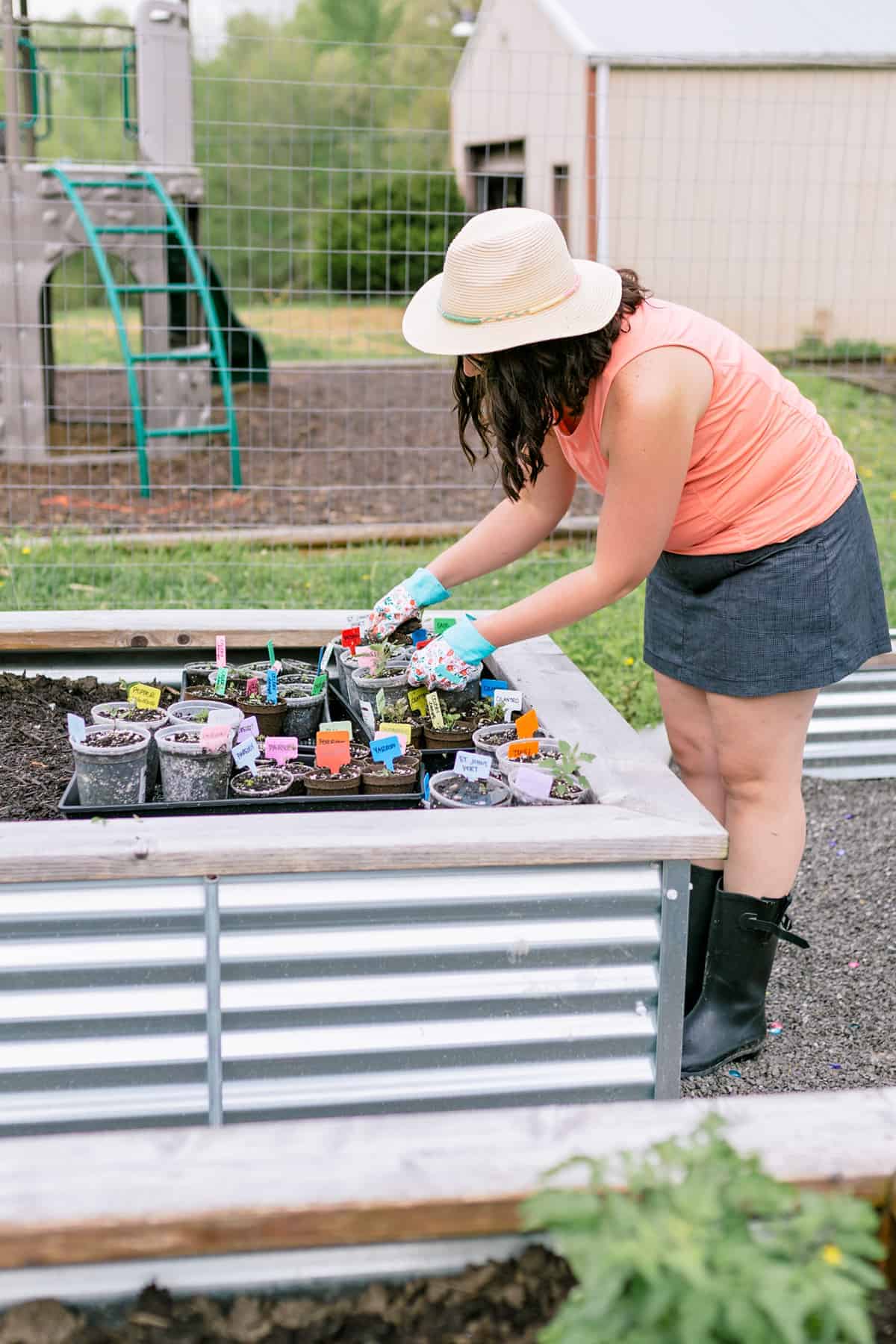Up until now, you have babied your little plants with the utmost care, but soon it’s going to be time to send them out into the big, bad world, and you want them to be prepared. As the date approaches where you’ll put your plants out in the garden, you’re going to slowly introduce them to outside elements through a process called “hardening off.”
Hardening off is where you get your plants used to three big elements: wind, rain, and temperature fluctuations. You’re basically telling your plant babies to “toughen up, kid!”
How to Harden Off Garden Plants
Start on a nice, warm, calm day 2-3 weeks before your plants are to go in the garden, and place them outside in a protected area. You want them to be slowly introduced to the wind, not blown over the first day they head outside. You can protect them by putting them up against a wall of your house. I like to put them inside a plastic greenhouse with one end left open. Do that for a few hours each day for 3-4 days. We tend to move our seedlings into our raised beds, with the sides giving some protection from the wind, and then covering them when the temperature gets too low.

You can then gradually increase the time your plants are outside, as well as decrease the amount of protection they have (i.e. moving them away from the wall or removing the cover from the greenhouse shelf). You always want to do this when the temperature is on the warmer side. Feel free to expose them to light rain as well—no violent thunderstorms, but a shower is good for them.
The last element you’ll want to expose them to is temperature fluctuations. As you get closer to your planting date, check the forecast for some time when the night temperature isn’t going to be too cold (nothing below freezing or even near it) and leave your plants out for part or even all of the night.
By the time you are ready to plant in the garden, your plants should be spending most (if not all) of their time outside in the open air.

What’s Next?
You have strong, healthy plants (either through purchasing seedlings or growing your own), and the next step is getting your plants in your garden, tending your garden, and actually harvesting some goodies!








I like your posts,I can always use the tips to ensure I am going to succeed.I have an interest in growing a garden and helped my freind water his plants.